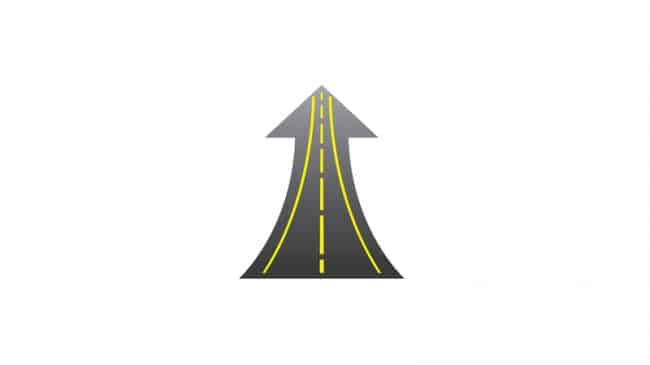Reason Foundation’s 20th Annual Report on the Performance of State Highway Systems tracks the performance of state-owned highway systems of the United States from 1984 to 2009. Eleven indicators make up each state’s overall rating, including highway expenditures, interstate and primary road pavement condition, bridge condition, urban interstate congestion, fatality rates and narrow rural lanes. The study is based on spending and performance data submitted by the state highway agencies to the federal government.
The system’s overall condition improved dramatically from 2008 to 2009. Six of the seven key indicators of system condition showed improvement, including large gains in rural interstate and urban interstate condition, and a reduction in the fatality rate. Only rural arterial condition worsened slightly, but poor mileage is still only a fraction of 1 percent. These improvements were achieved despite a slight reduction in per-mile expenditures. All seven indicators of performance improved between 2005 and 2009. Overall, expenditures for state-owned roads have increased about 18.8 percent since 2005, but in the 2008-09 recession expenditures actually decreased slightly between 2008 and 2009, dropping about 0.6 percent. States were also more cost-efficient with their money in 2009: administrative costs dropped about 14 percent (possibly through the states disbursing funds received earlier). In addition, money was shifted to capital and bridge expenditures (up 3.5 percent) and maintenance expenditures (up 11.0 percent).
The U.S. economic downturn, which began in 2007 and continued in earnest in 2008 and 2009, is an important background factor influencing these trends. In 2008 total U.S. annual vehicle-miles traveled (VMT) fell about 3.5 percent from 2007 levels, lowering congestion slightly from prior years. Also, beginning in late 2008 and continuing into 2009 and 2010, federal stimulus funding contributed an additional 22 percent to funding resources.
North Dakota continued to lead the cost-effectiveness ratings, followed by Kansas, Wyoming, New Mexico and Montana. But some large states-notably Missouri, Texas and Georgia-were also top-12 performers. At the bottom were Alaska, Rhode Island, Hawaii, California and New Jersey. Most states continued to improve their systems, but increasingly, system performance problems seem to be concentrated in a few states:
- Almost two-thirds of the poor-condition rural interstate mileage is in just five states: California, Alaska, Minnesota, New York and Colorado.
- Over half (52.7 percent) of the poor-condition urban interstate mileage is in just five states: California, New York, New Jersey, Illinois and Texas.
- Two states (Alaska and Rhode Island) reported more than 10 percent of their rural primary mileage to be in poor condition.
- Four states (California, Minnesota, Maryland and Connecticut) reported more than two-thirds of their urban interstates congested.
- Although bridge conditions are steadily improving, 20 states report more than one-quarter of their bridges are deficient, with one state (Rhode Island) reporting more than 50 percent of its bridges deficient. For 2010, 20 states again report more than one-quarter of their bridges are deficient, but none with more than 50 percent.
- Most states are improving their fatality rates. One state (Montana) reports a fatality rate greater than 2.0 per 100 million vehicle-miles and nine other states report a rate greater than 1.5 fatalities per 100 million vehicle-miles. For 2010, nine states report a fatality rate greater than 1.5 with no states reporting a rate above 2.0.
- Five states (Pennsylvania, Arkansas, West Virginia, Washington and Virginia) report more than one-quarter of their rural primary mileage with narrow lanes.
A widening gap seems to be emerging between most states that are making progress and a few states that are finding it difficult to improve. There is also increasing evidence that higher-level road systems (Interstates, other freeways and principal arterials) are in better shape than lower-level road systems, particularly local roads.
Reason Foundation’s 20th Annual Highway Report’s overall performance and cost-effectiveness rankings are:
- North Dakota
- Kansas
- Wyoming
- New Mexico
- Montana
- Nebraska
- South Carolina
- Missouri
- South Dakota
- Mississippi
- Texas
- Georgia
- Oregon
- Kentucky
- Virginia
- Nevada
- Idaho
- New Hampshire
- North Carolina
- Delaware
- Tennessee
- Indiana
- Arizona
- Washington
- Ohio
- Utah
- Alabama
- Vermont
- Maine
- Michigan
- Wisconsin
- West Virginia
- Iowa
- Illinois
- Louisiana
- Arkansas
- Florida
- Oklahoma
- Pennsylvania
- Maryland
- Colorado
- Minnesota
- Massachusetts
- Connecticut
- New York
- New Jersey
- California
- Hawaii
- Rhode Island
- Alaska
Detailed Results for Each State
Previous Editions of the Annual Highway Report
20th Annual Highway Report by David T. Hartgen
19th Annual Highway Report by David T. Hartgen
18th Annual Highway Report by David T. Hartgen
17th Annual Highway Report by David T. Hartgen


